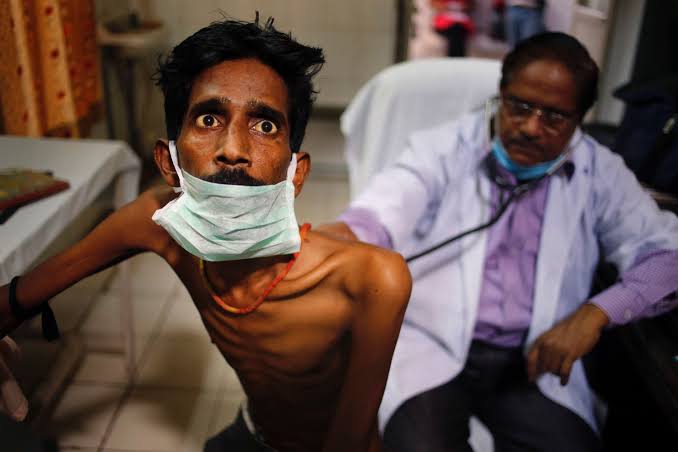The World Health Organisation has said an estimated 10.6 million people fell ill with tuberculosis (TB) in 2021.
This is an increase of 4.5 per cent from 2020 and 1.6 million people died from tuberculosis.
The WHO made this known in its 2022 global tuberculosis report issued on Friday, noting that the people included 187, 000 HIV positive people.
The report said the burden of drug-resistant TB (DR-TB) also increased by three per cent between 2020 and 2021, with 450,000 new cases of rifampicin-resistant TB (RR-TB) in 2021.
It said it was the first time in many years an increase has been reported in the number of people falling ill with tuberculosis and drug resistant TB.
The WHO Director-General, Dr Tedros Ghebreyesus, said tuberculosis services were among many others disrupted by the COVID-19 pandemic in 2021, adding that its impact on the TB response has been particularly severe.
“Ongoing conflicts across Eastern Europe, Africa, and the Middle East have further exacerbated the situation for vulnerable populations.
“If the pandemic has taught us anything, it’s that with solidarity, determination, innovation, and the equitable use of tools, we can overcome severe health threats.
READ ALSO: U.S. Speaker Pelosi’s husband attacked in 2a.m. break-in
“Let’s apply those lessons to tuberculosis. It is time to put a stop to this long-time killer. Working together, we can end TB,” Ghebreyesus said.
He said continued challenges with providing and accessing essential TB services meant that many people with tuberculosis were not diagnosed and treated.
According to him, the reported number of people newly diagnosed with tuberculosis fall from 7.1 million in 2019 to 5.8 million in 2020.
He said that there was a partial recovery to 6.4 million in 2021, but this was still well below pre-pandemic levels.
“Reductions in the reported number of people diagnosed with TB suggest that the number of people with undiagnosed and untreated TB has grown resulting first in an increased number of TB deaths and more community transmission of infection and then, with some lag-time, increased numbers of people developing TB,” the WHO boss said.
He stated that the number of people provided with treatment for RR-TB and multidrug-resistant TB (MDR-TB) also declined between 2019 and 2020.
Ghebreyesus added that the reported number of people started on treatment for RR-TB in 2021 was 161,746, only about one in three of those in need.
He said the report noted a decline in global spending on essential tuberculosis services from 6 billion dollars in 2019 to 5.4 billion dollars in 2021, which is less than half of the global target of 13 billion dollars annually by 2022.
Ghebreyesus said in the previous 10 years, most of the funding used in 2021 (79 per cent) was from domestic sources.
According to him, in other low- and middle-income countries, international donor funding remains crucial, main source is the Global Fund to Fight AIDS, and Malaria (the Global Fund).
He stated that the United States Government was the largest contributor of funding to the global fund and is also the largest bilateral donor; overall, it contributed close to 50 per cent of international donor funding for TB.
The Director of WHO’s Global TB Programme, Dr Tereza Kasaeva, said the report provided important new evidence and make a strong case on the need to join forces and urgently redouble efforts to get the tuberculosis response back-on-track to reach TB targets and save lives.
“This will be an essential tool for countries, partners and civil society as they review progress and prepare for the 2nd UN High Level Meeting on TB mandated for 2023.
“In the midst of stalling progress, there are some successes. 26.3 million people were treated for TB between 2018 and 2021, still far short of the 40 million targets set for 2018–2022 at the UN High-Level Meeting on TB.
“Of the 30 high TB burden countries, those with the highest levels of treatment coverage in 2021 included Bangladesh, Brazil, China, Uganda, and Zambia.
“The number of people provided with TB preventive treatment rebounded in 2021 to close to 2019 levels, but the cumulative total of 12.5 million between 2018 and 2021 was still far from the target of 30 million by the end of 2022”, Kasaeva said.
- EFCC chair: How Yahaya Bello declined invitation for interrogation - April 23, 2024
- EFCC chairman: I’ll resign if Yahaya Bello is not prosecuted - April 23, 2024
- EFCC: Yahaya Bello withdrew $720,000 from Kogi account to pay child’s school fee - April 23, 2024










